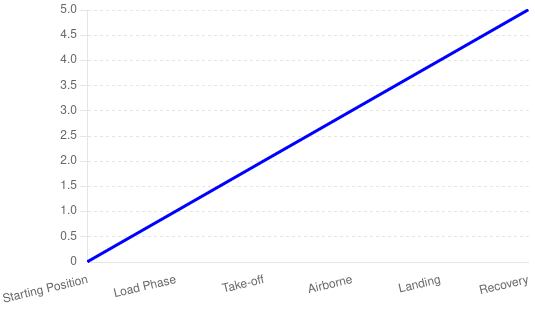Engaging in a box jump workout is like taking your routine to a new level. This form of exercise, part of the plyometrics family, is designed to improve your explosive power, strength, and agility. It’s more than just leaping onto boxes; it’s about challenging your mind and body, pushing limits, and breaking new ground.

When it comes to spicing up your fitness regimen, adding a bit of airtime is the secret ingredient you need. Whether you’ve been hitting the gym regularly or just starting, the versatility and the sheer physical challenge of jumping onto an elevated surface can bring a fresh perspective to your workouts. Let’s jump right in and explore how incorporating this dynamic move can transform your strength, power, and endurance.
| Day | Exercise | Sets | Reps | Notes |
| Monday | Box Jumps | 4 | 10 | Focus on explosive power and proper form |
| Tuesday | Rest or Light Activity | 0 | 0 | Optional: light cardio or stretching |
| Wednesday | Box Jumps | 4 | 10 | Increase height of the box if comfortable |
| Thursday | Rest or Light Activity | 0 | 0 | Optional: light cardio or stretching |
| Friday | Box Jumps | 4 | 10 | Combine with other lower body exercises |
| Saturday | Rest or Light Activity | 0 | 0 | Optional: light cardio or stretching |
| Sunday | Rest | 0 | 0 | Full rest to recover |
Jumping Into a New Fitness Chapter: Understanding the Basics
When you think about ramping up your fitness journey, it might be worth considering adding a simple yet powerful item to your exercise roster: the straightforward but effective box jump. This exercise is not just about jumping up and down a platform; it’s a multifaceted activity that might revolutionize your workout routine.
What Are Box Jumps Exactly?
At their core, jump box workouts are a form of high-intensity plyometric training. Plyometrics, for the uninitiated, involves explosive movements designed to increase speed and power. In the specific case of box jumps, the movement involves leaping onto and off of a stable, elevated surface, namely, a box. The key here is the burst of power that propels you from the ground onto the box.
A Potential Game-Changer for Your Fitness Goals
Incorporating this activity into your regimen comes with a promise of intense physical exertion, which translates into various fitness benefactions:
- Power Up: They train your muscles for improved explosive power, giving a boost to your ability to sprint or do any activity that requires a sudden burst of energy.
- Strength and Speed: The effort to launch oneself vertically recruits a number of muscle groups. This multifaceted muscle engagement can then lead to enhanced strength and quicker reflexive movements.
- Touchdown Control: Arguably as important as the takeoff is your landing. These jumps force you to master the art of landing softly – a skill that translates into better control over your body and its movements.
- Stamina Build-Up: They can be downright exhausting in the best possible way, leading to increased stamina over time as your body adapts to the high-intensity nature of the jumps.
They’re Not Just Physical
Furthermore, let’s not ignore the mental acrobatics at play. Successfully executing a jump requires focus and a psychological push to overcome hesitation. Each time you face that box, you’re also fine-tuning your mental fortitude.
Who Should Add Box Jumps to Their Routine?
Anyone looking for a comprehensive workout can benefit from adding a vertical leap element to their regimen, provided they are performed with proper form and precaution. Generally suitable for athletes and gym-goers looking to level up on their power and strength capabilities, they are quite adaptable to different fitness levels.
Harnessing the Power of the Plyometric Leap: The Benefits Galore
Let’s hop into the nitty-gritty of what these vertical ventures offer, far beyond the exhilaration of defying gravity, piece by piece.
Explosive Power at Its Peak
- Might in the Muscles: Each time you burst onto that sturdy box, you’re not just moving, you’re literally launching yourself against gravity. This requires and thus builds an immense amount of force within your lower body muscles.
Depth in the Drive: As you gain momentum in this exercise, you’re not just boosting your vertical leap but also enhancing the ability to execute any move where a surge of power is essential, think sprint starts or heavy lifting.
Speed Like the Wind
- Quick on the Draw: These ascents don’t just summon strength; they refine your speed. With repetition, the body learns to reduce the time taken to generate force, translating to faster sprints and quick directional changes in sports or everyday actions.
- Fine-Tuning the Fast-Twitch: The quick, powerful bursts required engage your fast-twitch muscle fibers, which are crucial for speedy and explosive movements. Like a car switching gears, your body learns to turn up the dial on velocity when needed.
Comfort in the Air, Grace on the Ground
- Acrobat in Training: As your body masters the art of soaring and landing from increased heights, your overall body coordination and spatial awareness receive a significant boost.
- Soft Landings: While the ascent is about power, the descent teaches control. Mastering the art of landing gently also means protecting your joints and cultivating a graceful control of your body’s movements, a benefit that extends beyond the box.
Endurance to Outlast
- Cardiovascular Kick: This high-intensity plyometric exercise provides a cardiovascular workout that’s hard to beat. You’ll find your endurance levels climbing as your heart and lungs become more efficient at managing and sustaining higher workloads.
- Sustainable Stamina: Over time, as you consistently challenge your body with these vertical voyages, you build up a resilience that makes other athletic endeavors feel less taxing, pushing your stamina to new heights.
Mental Might and Agile Acuity
- Confidence in the Climb: There’s a mental aspect to the rhythm of jump box workouts; they challenge you to push past mental barriers, to jump higher and land stronger, building self-assurance with every cleared height.
- Swift and Smart: The planning and execution involved with each leap not only enhance agility but also encourage a sharper cognitive response. You’re training your brain to calculate and execute complex movements in moments, enhancing your mental agility as well.
Preparing for Launch: Setting the Stage for Success
From selecting the right gear to warming up your muscles, laying down the groundwork is essential for ensuring both the safety and the effectiveness of your sessions. Let’s delve into setting the stage right, ensuring you’re prepped and ready to leap towards your fitness goals.
Choosing the Right Box: The Foundation of Your Jumps
- Material Matters: Boxes come in various materials, wood, foam, metal, each with its own set of benefits. Foam boxes are forgiving on missed jumps, reducing the risk of scrapes, while wood and metal provide a solid, stable base. Consider your experience level and comfort when choosing.
- Height Hurdles: Starting with a box that’s too high can lead to injury and discourage further attempts. Begin with a lower height that challenges you without compromising form. As you grow more skilled and confident, you can aim higher.
Appropriate Attire: Dressed for Success
- Footwear Fundamentals: Opt for shoes with good traction and stability. Cross-training or specific athletic shoes that support lateral and vertical movements can enhance your performance and reduce the risk of slips.
- Clothing Considerations: Wear comfortable, non-restrictive clothing. Your attire should allow for a full range of motion, especially in your legs and hips, to perform jumps effectively and safely.
Warm-Up: Priming Your Engines
- Dynamic Stretching: Engage in stretches that mimic your jumping motions. Lunges, high knees, and leg swings prepare your muscles and joints, enhancing flexibility and reducing the risk of injuries.
- Light Cardio: A brief jog, brisk walking, or skipping rope for 5–10 minutes increases your heart rate and blood flow to the muscles, ensuring they’re ready for the workout ahead.
Technique Tuning: The Blueprint of Your Performance
- Practice the Motion: Before adding the box, practice the jump and landing motions. Focus on a soft landing, with your knees slightly bent to absorb the impact and a powerful upward movement.
- Form Over Everything: Paying attention to your form from the start sets a foundation for success. Ensure your feet are shoulder-width apart when you jump, and use your arms to help propel you upward.
Safety First: A Cautionary Checklist
- Clear the Area: Ensure the space around the box is clear of any objects or obstacles that might pose a risk if you fall or need to jump off quickly.
- Buddy System: If possible, work out with a partner, especially in the beginning. A spotter can offer guidance on your form and provide assistance if needed.
The Mental Game: Setting Your Mindset
- Goal Setting: Establish clear, achievable goals for each session. Whether it’s increasing the number of repetitions or the height of the box, having specific targets can motivate you.
Stay Positive: Mental resilience is key. Celebrate your progress, no matter how small, and maintain a positive attitude through challenges and setbacks.

The Leap of Faith: How to Execute Jump Box Workout
We’ve delved into the countless benefits and prepared thoroughly for our journey. Now, it’s time to execute the action. Here’s a step-by-step breakdown of how to perform a box jump.
Step 1: Position Yourself
Start by standing in front of your box, about an arm’s length away. Stand tall with your feet hip-distance apart. Body posture is crucial; keep your chest and head up, looking directly ahead.
Step 2: Initiate the Jump
Initiating the jump involves a swift yet controlled movement. Begin by lowering yourself into a semi-squat position. Use your arms to generate momentum, swinging them backward as you squat down.
Step 3: Lift-Off
Now for the fun part – the leap. As you propel yourself upwards, swing your arms forward. This isn’t merely for show; the arm swing plays a crucial role in lending that extra upward momentum. Aim to land squarely in the middle of the box.
Step 4: The Landing
A good landing is just as critical as the jump. When your feet make contact with the box, aim to land softly, minimizing the noise. To cushion the impact, land with your feet flat on the ground and your knees slightly bent. After landing, raise yourself to a fully upright position by straightening your legs.
Step 5: Descending Gracefully
Come back down with control. Instead of jumping back down immediately, step down one foot at a time. Coming down this way rather than hopping off can help prevent needless strain on your joints.
Step 6: Rinse and Repeat
Prepare yourself for the next repetition. Reset your stance, take a moment to focus, and then repeat the sequence. It’s important here not to rush; maintaining proper form should take precedence over speed or quantity of repetitions.
Jumping At Your Own Pace: Variations for Every Fitness Level
Jumps can be as unique as each person who does them. You don’t need to worry about keeping up with the fitness gurus you see on social media. What matters is your journey, tailored to your abilities. Like any good adventure, there’s more than one path to the summit. Let’s look at box jump workout variations that can suit you, whether you’re just getting comfortable with jumping or you’re ready to push the envelope.
Starter Steps: Low-Impact Alternatives
For the beginners or those looking for less jarring alternatives:
- Step-Ups
Find a low platform and simply step one foot up at a time, switching your lead foot with each rep. It’s simple, effective, and a great way to build stability and strength.
- Squat Jumps
Before going for height, try squat jumps on the ground. They prep your muscles for explosive movement without the intimidation of a box.
Building Confidence: Progressing with Caution
Once you’ve got the hang of those, it’s time to level up:
- Low Box Jumps
Begin with a box that’s just high enough to be a small challenge. Concentrate on the quality of your movement rather than height or speed.
- Assisted Jumps
Use a lower box and a resistance band or a helping hand for support. This helps you get used to the motion of jumping onto a platform.
Picking Up the Pace: Intermediate Challenges
Got those down pat? Bring in a bit more zest:
- Standard Box Jumps
Now you’re ready for the textbook box jump. Find a height that’s challenging but doable, maintaining good form throughout.
- Multiple Box Jumps
Line up two or more platforms of varying heights and hop from one to the next. This not only improves power but also precision and coordination.
Soaring Higher: Advanced Adaptations
For the daring and ready-to-fly fitness fans:
- High Box Jumps
Take a leap of faith with a taller box. This tests your limits and really ramps up the intensity.
- Weighted Box Jumps
Add a weighted vest or hold a light dumbbell to introduce an extra force to work against.
Find Your Rhythm: Creative Cadence
Fitness shouldn’t be mundane. Here are ways to keep your routine fresh:
- Timed Jumps
Set a timer and see how many jumps you can complete. It’s a heart-pumping, quick-tempo challenge.
- Box Jump Overs
Instead of pausing on the top, jump clear over the box. This variation adds a cardiovascular element and hones agility.
Finding Your Fit: Incorporating Jumps into Your Existing Workout Routine
Every workout routine is like a puzzle. Whether focusing on strength training, endurance workouts, or even yoga, each activity forms a unique piece that impacts your overall fitness picture. When we talk about introducing jumps into your regimen, it’s about finding where they fit best and how they can elevate your fitness goals. So, let’s explore how you can seamlessly integrate box jump workouts into your journey.
The Warmup Welcome: Kicking Off with Power
Think of your workout sessions as a story to unfold. Using jumps at the onset of a routine can revolutionize the way your narrative begins.
- Ignite the Spark: Performing a few low-intensity jumps can serve as a dynamic warm-up, preparing your body for the session ahead by boosting your heart rate and awakening your muscles and joints. It sets the tone for a rigorous and energetic workout.
- Increase the Intensity: As you progress, you can increase your height or add more repetitions to your warm-up jump routine. This helps prime your body for high-intensity workouts.
Mid-Session Magic: Keeping the Energy High
Adding jumps in the middle of your training session can provide a much-needed energy boost, breaking the monotony and keeping you engaged.
- Power Breaks: Instead of resting completely between sets of different exercises, you can perform a quick series of jumps. Not only does it keep the heart rate up, but it also adds an element of cardio to your strength training.
- The Super-Setter: Another approach is to pair jumps with a contrasting exercise in your routine, similar to a superset. For example, after a set of heavy weightlifting, immediately transition into a round of jumps. This keeps your muscles guessing and increases overall stamina.
Cool Down Companion: A Softer Landing
You might only relate jumps with high energy, high power efforts. But they can be transformed into an effective cool-down tool as well.
- Gradual Descent: Switching to lower intensity jumps or step-ups towards the end of your workout can help bring down your heart rate gradually, signaling your body that it’s time to wrap up.
Spreading the Jump Joy: Alternate Day Schedules
To prevent overuse injuries and give your body ample rest, consider incorporating jumps every other day or a few times per week instead of every day.
- Full-Day Focus: Jumps require strong involvement of the lower body, so you can dedicate specific days to focus on them. This gives you ample time to perfect your techniques and push your boundaries.
- Mix and Match: On jump-focused days, couple it with upper body or core exercises. This ensures you get a balanced full-body workout in a single session.
Charting the Course: Crafting Strategies for Progress Tracking and Goal Setting
A crucial part of this routine is knowing where you stand and where you’re going. It’s about developing a system to monitor your progress and setting precise, achievable goals to keep that spark of motivation soaring. So, let’s navigate the strategies you can employ for effective progress tracking and goal setting for your jump workouts.
Documenting Your Journey Through a Box Jump Workout Log
A workout log is the diary of your fitness journey. By recording details of your workout sessions, like the height of your jumps, number of reps and sets, and how long it took you, you can visually trace your progress over time.
Video Tracking For Technique
Videos don’t lie, making them an excellent tool for tracking your form and technique. Occasional workout recordings can help you notice improvements and areas that need more focus.
Short-Term Goals for Instant Gratification
Set mini-goalposts along the way, such as increasing the rep count or jumping height by a small margin. These short-term goals act as stepping stones, giving you a morale boost as you achieve them piecemeal.
Long-Term Objectives for Constant Strive
Long-term targets give you a direction to continually strive towards. Be it increasing explosive strength to jump a certain height or the stamina to do a specific number of reps, aim high but maintain a realistic outlook.
Experimenting with Your Routine
Variation is the key to maintaining the excitement. This could involve exploring alternative jump activities, progressively increasing your workout intensity, or changing the time and environment you usually practice in.
Revising Goals According to Progress
As you grow stronger and fitter, your initial goals may feel less challenging. It’s important to revise these milestones to ensure you keep pushing your boundaries and improving.
With these strategies, tracking progress and setting goals isn’t just a chore but an exciting part of your workout journey. Each completed log entry, each fulfilled goal, serves as a reminder of how far you’ve come and reignites your drive to push on. As you reflect on your progress, let it blaze a trail that lights your path forward. Remember, every leap toward your goal is a triumph, no matter how small. Happy Jumping!



